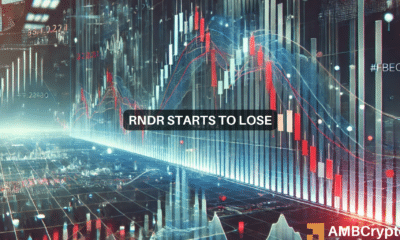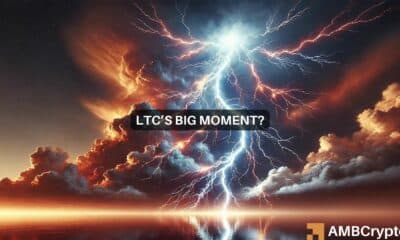Why Ethereum’s Buterin is ‘really looking forward to’ this big move

Ethereum’s (ETH) co-founder Vitalik Buterin recently took to X to talk about how optimistic he is about Verkle trees. This upgrade is part of Ethereum’s ambitious roadmap, one that aims to enhance the protocol’s efficiency, security, and scalability.
The introduction of Verkle trees is a pivotal advancement. It is expected to enable stateless validator clients, while contributing to solo staking in Ethereum.
Understanding Verkle trees
Verkle trees, a blend of vector commitments and Merkle trees, help to streamline the way Ethereum nodes validate transactions and state changes. These trees reduce the size of proofs required to validate the blockchain’s state from megabytes to just a few kilobytes.
The structure of Verkle trees allows them to be much flatter than their predecessors. This means fewer intermediate nodes will link a leaf (transaction or state change) to the root (the starting point of the tree).
Buterin’s vision with Verkle trees
Back in December 2021, Buterin took to X (formerly Twitter) to lay down the roadmap for Ethereum. Five fundamental developmental phases were highlighted, namely – The Merge, The Surge, The Verge, The Purge, and The Splurge.
The implementation of Verkle trees is the primary step towards achieving the “Verge” phase of Ethereum’s development. This phase focuses on enhancing the network’s scalability and reducing its carbon footprint. This upgrade will lower the hardware requirements for running an Ethereum node, thereby promoting greater decentralization. Furthermore, the reduced proof sizes facilitate faster and more efficient network synchronization and state verification.
Solo staking, but better
The Verkle trees upgrade also introduces improvements that could make solo staking more accessible to individual validators by reducing the operational costs and technical barriers associated with running a node.
Also, with Verkle, nodes can join the network instantaneously. This can be beneficial in terms of staking. Furthermore, it paves the way for potential scaling benefits and improved gas limits.
Buterin wrote on X,
“I’m really looking forward to Verkle trees. They will enable stateless validator clients, which can allow staking nodes to run with near-zero hard disk space and sync nearly instantly – far better solo staking UX. Also good for user-facing light clients.”
A new horizon for Ethereum?
With the Verkle upgrade, Ethereum can get past any scalability issues. It’s setting the stage for a more scalable, secure, and decentralized future. This development has been met with excitement by the Ethereum community, as evidenced by discussions and feedback under Vitalik’s post on Twitter.
Users and developers alike are optimistic about the potential for Verkle trees to enhance Ethereum’s performance and utility, signaling a new horizon for the blockchain platform. However, there might be some challenges that lie ahead. The transition from Merkle to Verkle will be particularly difficult, all while keeping the network up and running without hassles. The introduction of new protocols and structures might be helpful.






